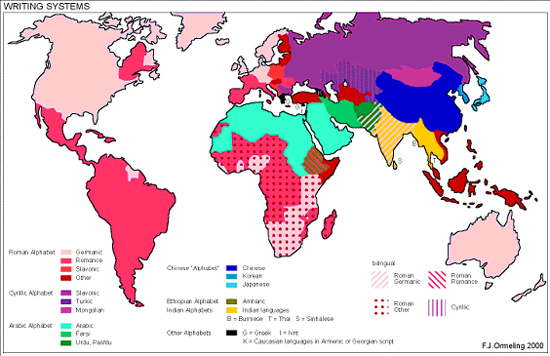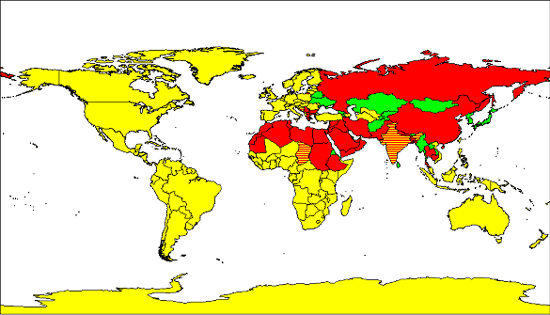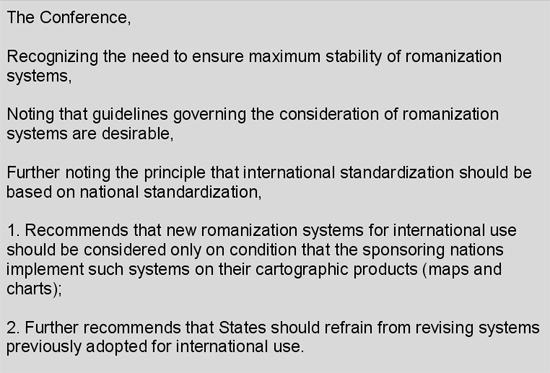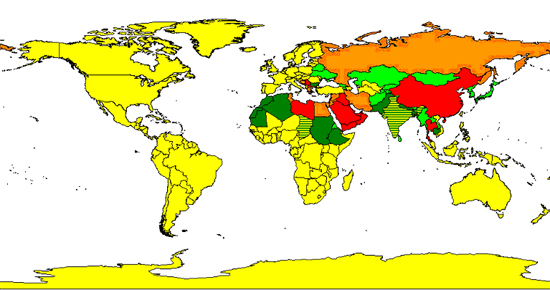In contrast to ISO systems the ones recommended by the United
Nations favour practical aspects and prefer systems that yield
"pronounceable" names. As a comparison here are some
names converted using a United Nations-recommended system and
ISO transliteration:
UN-accepted single romanization systems exist
for Amharic, Arabic, Bengali, Bulgarian, Chinese, Greek, Gujarati,
Hebrew, Hindi, Kannada, Khmer, Macedonian, Malayalam, Marathi,
Mongolian, Nepali, Oriya, Persian, Punjabi, Russian, Serbian,
Tamil, Telugu, Thai, Tibetan, Uigur and Urdu (see UNGEGN romanization
website ).
In principle, Romanization is only necessary for
non-Roman writing systems. Their distribution can be seen here:

The pink and red colours denote Roman alphabet.
For which languages with a non-Roman writing system do UNGEGN-accepted
conversion systems exist?

Source: Päll, Tainach 2010
Yellow: Roman alphabet area; Red: languages with officially,
UNGEGN endorsed conversion systems to the Roman alphabet; Green:
language areas without officially, UNGEGN-endorsed conversion
systems to the Roman alphabet. Striped areas: both colours apply.
Not all countries where UNGEGN-endorsed systems
apply have also conversed their toponyms according to this system.
In the map below this is shown (situation 2010). National implementation
of the system now is a requirement in order to be recognized
and accepted as an UNGEGN-endorsed system. This means, it not
only has to be used in maps, but also on roadsigns, in official
information, etc. The more widely the system is used, the better.
It has been stated that new romanization systems for international
use are considered only on condition that the sponsoring nations
implement such systems on their cartographic products (maps
and charts)(Res. IV/15).*


source: Päll, Tainach 2010
In the red countries the officially UNGEGN-endorsed
romanization systems have been implemented. In orange-coloured
countries these systems have been implemented only partly. In
dark green areas the officially UNGEGN-endorsed romanization
systems have not been implemented; in light green areas no UNGEGN-endorsed
romanization systems exist.
Other languages/scripts that still have to be
provided with an UNGEGN-endorsed romanization system are: Armenian,
Burmese, Byelorussian, Dzongkha, Georgian, Japanese, Kazakh, Kirghiz,
Korean, Lao, Maldivian, Mongolian (Cyrillic), Pashto, Sinhalese,
Tajik, Tigrinya, Ukrainian.




